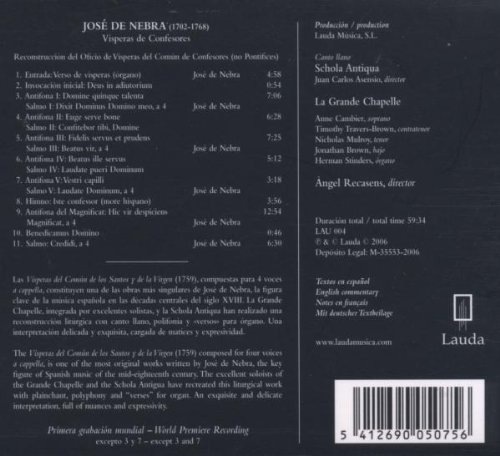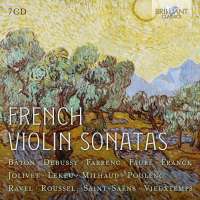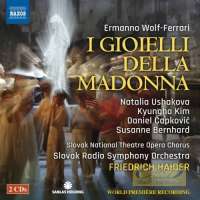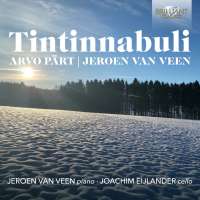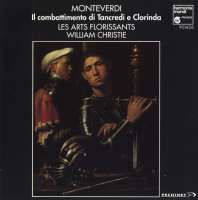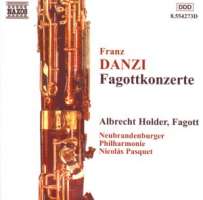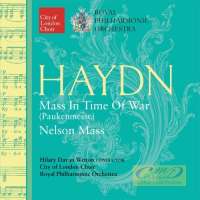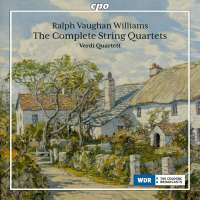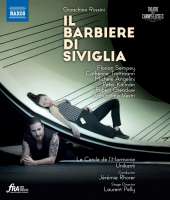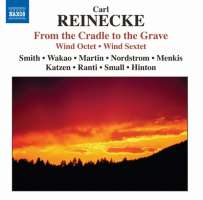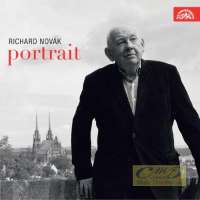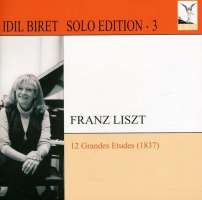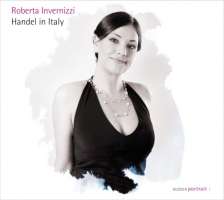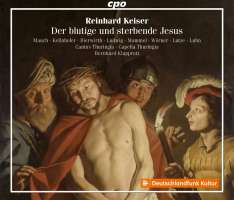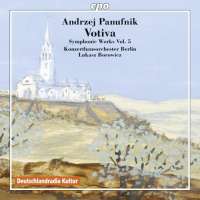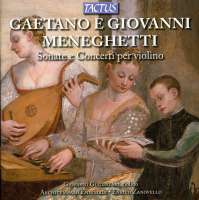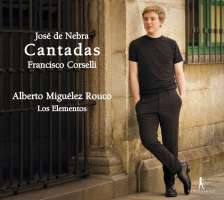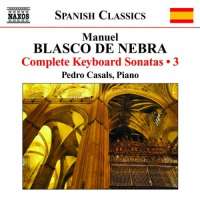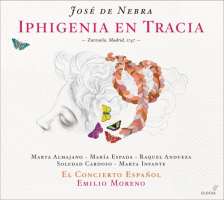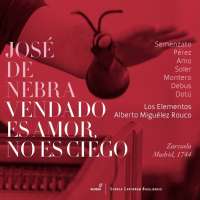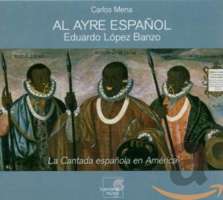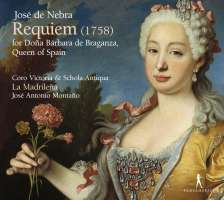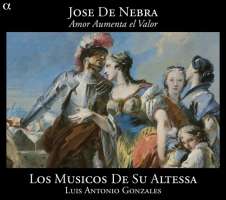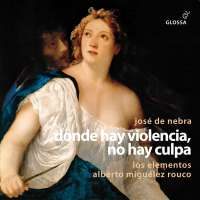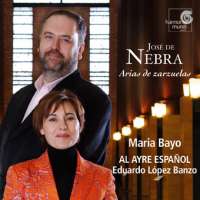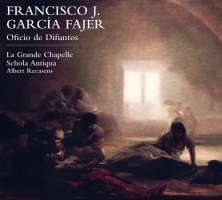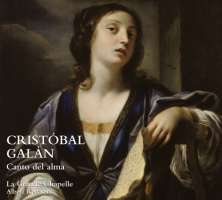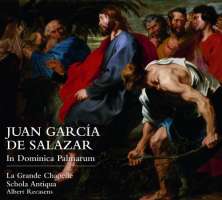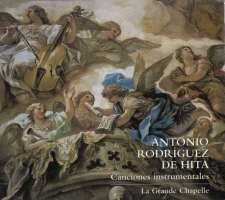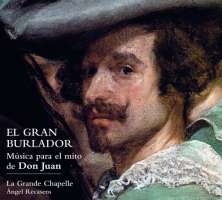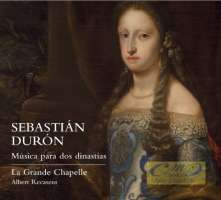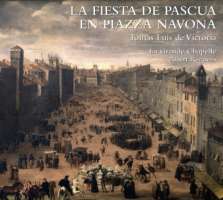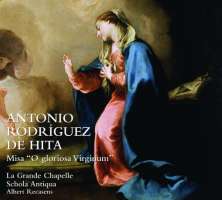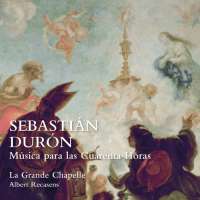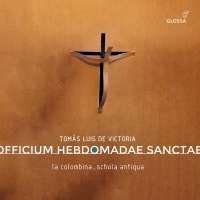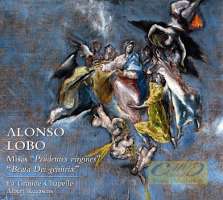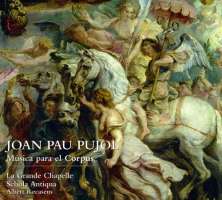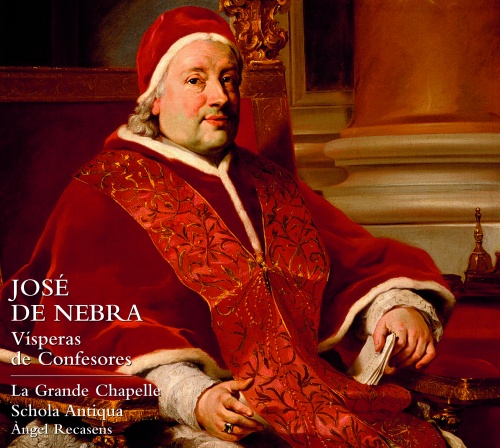
kompozytor
Nebra, Jose de
tytuł
Nebra: Vespers of Confessors
wykonawcy
La Grande Chapelle;
Schola Antiqua;
Recasens, Angel
Schola Antiqua;
Recasens, Angel
nr katalogowy
LAU 004
opis
As a consequence of the fire at the Alcázar of Madrid in 1734 that all but destroyed the music archives of the Royal Chapel, Nebra was able to focus on sacred music, which in keeping with the period were written primarily for a double choir and instrumental accompaniment. In this context, the Vísperas del Común de los Santos y de la Virgen (1759), written a cappella in only four parts, is unique. The Vísperas is a collection of psalms and a Magnificat composed for the office of vespers. Nebra had the work copied, richly bound, and sent to the most important cathedrals of Spain, and to the Sistine Chapel as well. On this occasion, La Grande Chapelle and the Schola Antiqua have reconstructed one of the possible offices, that of the Vespers for the Common of Confessors (not Popes). In addition to the structural elements of the liturgy, the psalmody responds to the practice of alternatim between plainchant, polyphony and “verses” for organ. All of the music for this first world recording is unpublished and comes As a consequence of the fire at the Alcázar of Madrid in 1734 that all but destroyed the music archives of the Royal Chapel, Nebra was able to focus on sacred music, which in keeping with the period were written primarily for a double choir and instrumental accompaniment. In this context, the Vísperas del Común de los Santos y de la Virgen (1759), written a cappella in only four parts, is unique. The Vísperas is a collection of psalms and a Magnificat composed for the office of vespers. Nebra had the work copied, richly bound, and sent to the most important cathedrals of Spain, and to the Sistine Chapel as well. On this occasion, La Grande Chapelle and the Schola Antiqua have reconstructed one of the possible offices, that of the Vespers for the Common of Confessors (not Popes). In addition to the structural elements of the liturgy, the psalmody responds to the practice of alternatim between plainchant, polyphony and “verses” for organ. All of the music for this first world recording is unpublished and comes As a consequence of the fire at the Alcázar of Madrid in 1734 that all but destroyed the music archives of the Royal Chapel, Nebra was able to focus on sacred music, which in keeping with the period were written primarily for a double choir and instrumental accompaniment. In this context, the Vísperas del Común de los Santos y de la Virgen (1759), written a cappella in only four parts, is unique. The Vísperas is a collection of psalms and a Magnificat composed for the office of vespers. Nebra had the work copied, richly bound, and sent to the most important cathedrals of Spain, and to the Sistine Chapel as well. On this occasion, La Grande Chapelle and the Schola Antiqua have reconstructed one of the possible offices, that of the Vespers for the Common of Confessors (not Popes). In addition to the structural elements of the liturgy, the psalmody responds to the practice of alternatim between plainchant, polyphony and “verses” for organ. All of the music for this first world recording is unpublished and comes In composing the vespers, Nebra deliberately employed a traditionally austere style, in contrast to the rest of his oeuvre. On the whole, the serenity, bareness and beauty of the melodic lines prevail. The interpretation of La Grande Chapelle is especially attractive for its impeccable transparency of line and wide array of nuances. The search for expressiveness together with an absolute respect of the content of the text, the balance and tidiness all bear the seal of Àngel Recasens. The exquisiteness and delicacy of this version are an awesome revelation of one of the geniuses of eighteenth-century Spain.
nośnik
CD
gatunek
Muzyka klasyczna
producent
Lauda
data wydania
22-08-2012
EAN / kod kreskowy
5412690050756

(Produkt nie został jeszcze oceniony)
cena 79,00 zł
lubProdukt dostepny w niewielkiej ilości.
Wysyłka w ciągu 3 dni roboczych
Darmowa wysyłka dla zamówień powyżej 300 zł!
Darmowy kurier dla zamówień powyżej 500 zł!
sprawdź koszty wysyłki